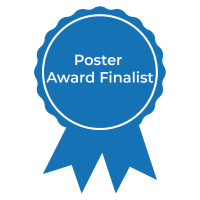Anatomy Education: Teaching Methods & Innovations Posters
Poster: Anatomy Education: Teaching Methods & Innovations Posters
115 - Understanding the Anatomy of Portal Hypertension: A Qualitative Study of How Game-based Learning Provides Much More Than Knowledge Acquisition
Saturday, March 23, 2024
5:00pm - 7:00pm US EDT
Location: Sheraton Hall
Poster Board Number: 115
There are separate poster presentation times for odd and even posters.
Odd poster #s – first hour
Even poster #s – second hour
Co-authors:
There are separate poster presentation times for odd and even posters.
Odd poster #s – first hour
Even poster #s – second hour
Co-authors:
Erin Fillmore - Associate Professor, Clinical Anatomy & Imaging, Warwick Medical School

Thomas J. Paddock
Medical Student
Warwick Medical School
Nuneaton, England, United Kingdom
Presenting Author(s)
Abstract Body : INTRODUCTION & OBJECTIVE
Game-based learning (GBL) is increasingly used in anatomical education to supplement traditional didactic methods of learning. Adult learners in particular may benefit from GBL, given the autonomous and iterative nature of a well-designed educational game. While the literature currently focusses on knowledge retention, this qualitative study aimed to explore how GBL influences the way medical students think about learning anatomy, specifically the anatomy of portal hypertension.
MATERIALS & METHODS
A table-top, multifaceted board game was designed to help medical students consolidate the anatomy of portal hypertension – related clinical skills and physiology were also included for a holistic experience. First, second and third year medical students (n=12) at Warwick Medical School participated in an observed one-hour game session. Post session one-on-one interviews were conducted with each participant, using a semi-structured topic guide. Interviews were recorded, transcribed, and analysed by two independent researchers to look for emergent themes alongside ethnographic data collected during the observation.
RESULTS
Analysis of interviews and ethnographic data revealed the following 5 key themes emerge from the GBL experience: (1) gameplay discussion facilitated self-identification of gaps in knowledge, giving students a roadmap of what to study next; (2) peer-peer knowledge shared during the game prompted players to reflect and reconsider individual study techniques, helping students recognise alternative ways to learn; (3) gameplay created memorable ‘lightbulb’ moments in understanding, which allowed linking together of broader concepts; (4) gameplay created a judgement-free environment that provided relief from prevailing ‘medical school guilt’ associated with taking breaks, thus improving mental wellbeing; (5) game mechanics are critical to ensure GBL delivers effective learning experiences.
CONCLUSION
This qualitative study provides further insight into GBL, with emergent themes supporting and expanding upon the literature. Namely, that developing refined, accessible GBL resources not only improves knowledge retention, but also increases motivation to study, facilitates personal insight into a learner’s revision approach, provides metacognitive insight, and improves wellbeing by reducing guilt when taking a break from traditional learning methods.
SIGNIFICANCE
An aspect of learning that is often neglected is the ability for adult learners to cultivate joy in their consolidation – a drive to make self-study fun. GBL offers flexibility for educators to use as an effective, affordable tool as part of a curriculum. Our findings warrant further studies to probe the long-term benefits of GBL on study outcomes.
Game-based learning (GBL) is increasingly used in anatomical education to supplement traditional didactic methods of learning. Adult learners in particular may benefit from GBL, given the autonomous and iterative nature of a well-designed educational game. While the literature currently focusses on knowledge retention, this qualitative study aimed to explore how GBL influences the way medical students think about learning anatomy, specifically the anatomy of portal hypertension.
MATERIALS & METHODS
A table-top, multifaceted board game was designed to help medical students consolidate the anatomy of portal hypertension – related clinical skills and physiology were also included for a holistic experience. First, second and third year medical students (n=12) at Warwick Medical School participated in an observed one-hour game session. Post session one-on-one interviews were conducted with each participant, using a semi-structured topic guide. Interviews were recorded, transcribed, and analysed by two independent researchers to look for emergent themes alongside ethnographic data collected during the observation.
RESULTS
Analysis of interviews and ethnographic data revealed the following 5 key themes emerge from the GBL experience: (1) gameplay discussion facilitated self-identification of gaps in knowledge, giving students a roadmap of what to study next; (2) peer-peer knowledge shared during the game prompted players to reflect and reconsider individual study techniques, helping students recognise alternative ways to learn; (3) gameplay created memorable ‘lightbulb’ moments in understanding, which allowed linking together of broader concepts; (4) gameplay created a judgement-free environment that provided relief from prevailing ‘medical school guilt’ associated with taking breaks, thus improving mental wellbeing; (5) game mechanics are critical to ensure GBL delivers effective learning experiences.
CONCLUSION
This qualitative study provides further insight into GBL, with emergent themes supporting and expanding upon the literature. Namely, that developing refined, accessible GBL resources not only improves knowledge retention, but also increases motivation to study, facilitates personal insight into a learner’s revision approach, provides metacognitive insight, and improves wellbeing by reducing guilt when taking a break from traditional learning methods.
SIGNIFICANCE
An aspect of learning that is often neglected is the ability for adult learners to cultivate joy in their consolidation – a drive to make self-study fun. GBL offers flexibility for educators to use as an effective, affordable tool as part of a curriculum. Our findings warrant further studies to probe the long-term benefits of GBL on study outcomes.


